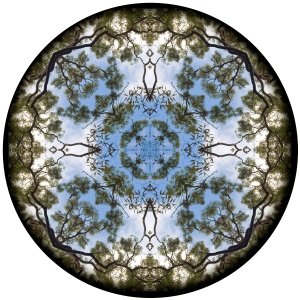
Remember Christina from Episode 7? She’s the one who spared no time at all in getting as far away from Awayville, USA as she could. This week we return to Christina, and we get introduced to her mom… the redneck. Not that Christina’s embarrassed about that, or anything.
Revisiting Christina’s conversation gives me the opportunity to illustrate more specifically how my approach to discourse analysis both draws on and differs from Critical Discourse Analysis (CDA). (Episodes 55 and 56 provide a bit of background for this discussion, if you’d like to learn more.)
Get a copy of the transcripts here.
I first offer a CDA-style analysis of Christina’s remarks about Awayville. I’m using the approach to CDA developed in Norman Fairclough’s work (Language and Power is a good introduction) and Lilie Chouliaraki and Norman Fairclough’s Discourse in Late Modernity.
I explain that a CDA approach would recognise this conversation as a text that was co-produced by three social actors. It might note that Christina’s representation of her hometown in Extract 1 draws upon two discourses – a discourse of socioeconomic pressure and a discourse of ‘rugged individualism’. One effect of her juxtaposing these is that it enables her to ‘blame the victims’. In other words, the people who suffer because of decisions made by local governments are blamed for not getting themselves out of a bad situation.
CDA contributes to social change through its consciousness-raising effects. In the example I’ve given, I’ve encouraged listeners to start paying attention to other texts in which individuals are implicitly blamed for what are, in effect, structural inequalities.
Then I move on to illustrate my own approach to discourse analysis. My perspective on texts is rather different. Instead of seeing texts (conversational, written, performed, etc.) as products of communication processes, I treat them as artefacts that reveal particular ways of structuring information.
I’m looking for patterns in the grammar. Look at this clause, for instance, from Extract 2 (line 1):
- they’re all into Nascars
Now compare it with this clause from lines 4-5:
- my mo:m is all about Nascar
There’s a repetition of grammatical and lexical structure here. The non-repeated elements show how this structure changes. It moves from the general (non-specific, third person plural they) to the unique, in the form of the specific referent, my mo:m.
Also, have a look at the ‘middle-o(f)-nowhere’ towns. These show up in both extracts.
In Extract 1, it takes this form:
- they closed it [the army depot] and so now all these people who live like in the little towns outside like in the middle o(f) nowhere (lines 13-15)
In Extract 2, it looks like this:
- she moved to this little like western North Carolina middle-o(f)-nowhere town and it’s like she belongs there (lines 34-35)
The movement in both clause complexes that mention middle-o(f)-nowhere towns is from a material action process (closed in Extract 1 and moved in Extract 2) to a relational process (live in Extract 1 and belongs in Extract 2). The pattern reveals a type of transformation that has to do with the relationship between people and their local economies and their socioeconomic status.
In the first extract, people only thrive when their local economies thrive – and later we learn it is their responsibility to divest themselves of their low socioeconomic status.
In the second extract, we have an image of an individual who thrives because she moves to an environment that supports and accepts her without requiring her to change her status.
Did you catch that? There’s a moment of transformation there – where we can begin to re-imagine social structure.
The old social structure looks something like this: generic groups of people move in and out of environments which are either supportive or hostile. The environment can change from being supportive to hostile at a moment’s notice, without any regard for the people affected.
The new social structure? An individual moves into a new environment that feels like a good match. The environment shapes itself to embrace this new person, such that she belongs. The individual and the environment are in a mutually beneficial relationship.
My approach to discourse analysis is one that begins by revealing the oppressive social structures that are often masked in discursive configurations. I use the tenets of CDA to help me with that. And then I move on to seek out new social structures – welcomed and welcoming alternatives to these hostile worlds. Where do I find these? In the patterns of the texts themselves.
